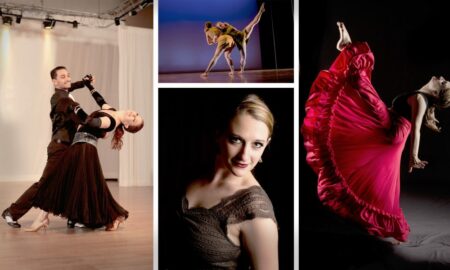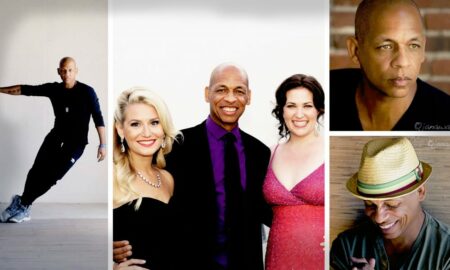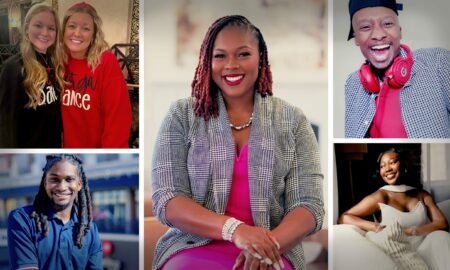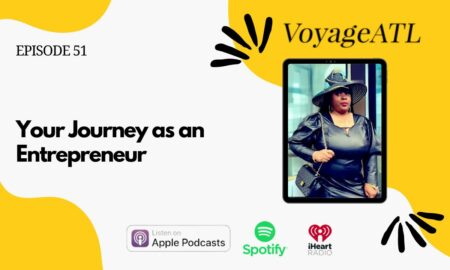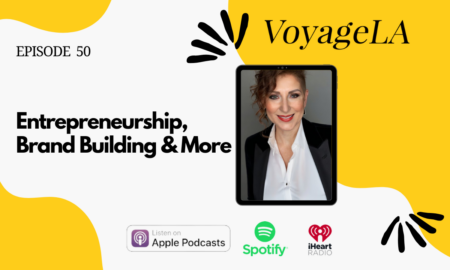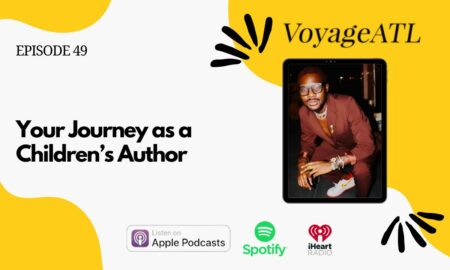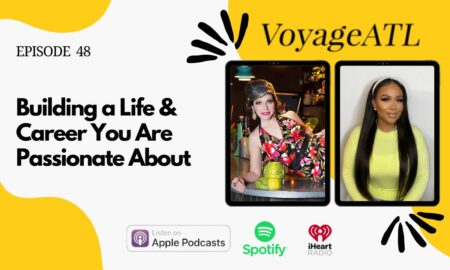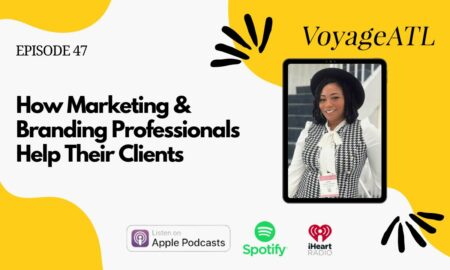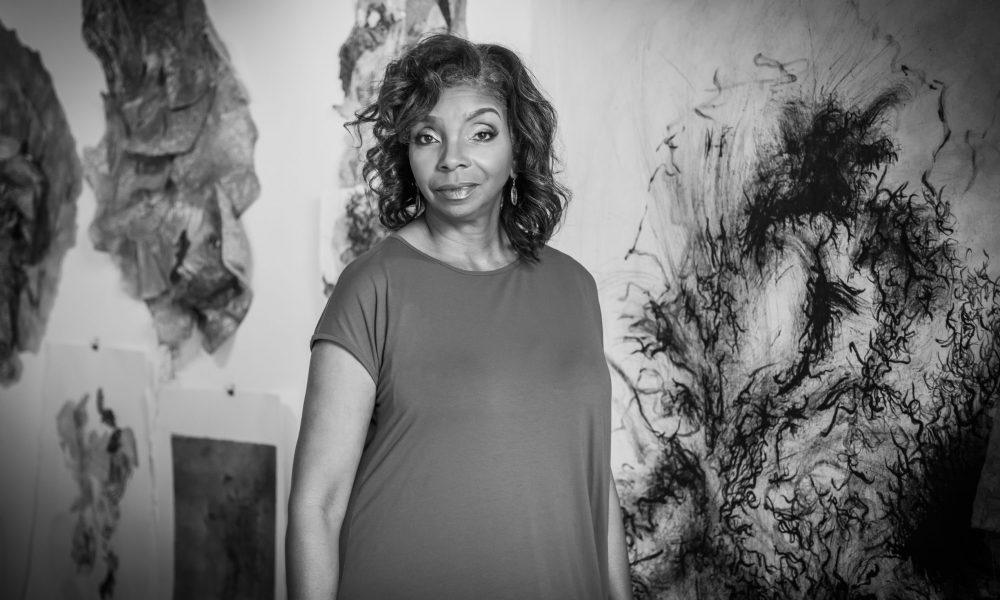

Today we’d like to introduce you to Eleanor Neal.
Eleanor, can you briefly walk us through your story – how you started and how you got to where you are today.
Growing up in Indiana, my parents took me and my siblings to visit the museums in Chicago; The Museum of Science & Industry; The Field Museum; and The Museum of the Art Institute of Chicago. I remember how exciting it was to walk up the steps past the lions at the Art Institute Museum to enter the huge building filled with so many people, and filled with huge sculptures and paintings. It was an amazing experience. I went on family outings and vacation going on family picnics and vacations, spending most of my time sitting under a tree sketching in my journal and sketchbook while my cousins enjoyed water sports activities. I knew growing up, I wanted to be an artist. I graduated from Indiana University with a B.A. in Art and M.S. in Art Education.
After college, I relocated to Atlanta, where I could feel the energy of the thriving arts community. I knew this was a place where I might become a part of the art community. I began to build connections with various artists while teaching art. I spend my summers attending artists’ residencies around the country as a way to renew my creative spirit and connect with interesting people in a unique artistic environment. At Tougaloo College in Mississippi, my professor John T. Scott, MacArthur grant recipient, taught me to bring my passion for nature in my art work. He introduced me to printmaking and he taught me a unique monotype process that is still a part of my work today. The stimulation of artists’ residencies has taken me to Haystack School of Crafts in Deer Isle, Maine. I have enjoyed Maine College of Art in Portland, Maine where I had the opportunity to work in their printmaking department during the residency. I recently had the opportunity to return to Hambidge Creative Arts Residency in the Georgia Mountains. While there, I had the opportunity to explore beautiful waterfalls while taking hikes which gave me quiet time to rejuvenate my spirit while connecting with nature.
In 2010, I was invited to the Experimental Printmaking Institute (EPI) at Lafayette College in Easton, PA to study with printmaker and Professor Curlee Holton. I was honored to receive the Faith Ringgold Fellowship, Any One Can Fly, which is an award given to women printmakers. It was a wonderful experience. I had the opportunity to further explore and experiment with printmaking. It was an awesome experience to see Faith Ringgold and Sam Gilliam’s art work on the dry racks. These are artists I truly admire and works I had only seen in museums and art galleries.
After being invited to attend these artists’ residencies, I realized that I wanted to broaden my artistic, creative journey by going back to school and getting my MFA. I applied and was accepted to the prestigious, School of the Art Institute of Chicago. I attended the Low-Residency MFA program in 2014 and graduated in 2016. It was an amazing three years. While in graduate school I continued to work and live in Atlanta, I was introduced to a much-deepened engagement with contemporary issues, theories, and skills. The program was focused on writing and how to connect the writing and conducting research that is relevant to my artistic practice. In addition to the coursework, I was paired with a SAIC alumni advisor in Atlanta to spend time with me at my home studio at The Goat Farm Arts Center.
I really enjoyed the three summers in Chicago with my peers where I continued my course work which included an art studio in the heart of Chicago. It was a time to engage, create, construct, critique, and interact with artists on the national and international level. There were so many amazing artists spending time with us critiquing our work in our studios. I also had access to the resources at SAIC, the Museum of Contemporary Art of Chicago, the Renaissance Society, and the city’s vibrant architecture and gallery scene.
One of the experiences that led me deeper into my creative work while in the program was my travels to the Georgia Sea Islands. It was interesting, while in graduate school in Chicago I rediscovered the South. As a result of my graduate work, I spent time on Ossabaw Island, Savannah, Jekyll Island, and St. Simmons. The readings, research, and writings led me to an interest in the women of West Africa, Guadeloupe and the Gullah Islands near the Georgia Sea Coast who fought to survive in a world of darkness, enslavement, and chaos. It led to a connection to water that led to a sense of empowerment. I was thinking about what water represents; birth, cleanliness, spirituality, power and the journey to a new world for a new life.
I read “Daughters of the Dust” by Julie Dash and saw the film which was directed and produced by Julie Dash. The film is based upon a Gullah family from the Georgia Sea Islands in the 20th century and their life story led by the matriarch of the family, the grandmother. I felt a strong connection to my work and the stories of these women in this unique place.
Last summer, I was invited to attend a residency at the Vermont Studio Center in Vermont where I continued to create large works on canvas that was inspired by the journey to the Gullah Islands. In addition to painting and drawing, I worked with fabric and spent time dyeing fabric thinking of the Gullah women and their connection to indigo dyeing. Presently I work in two art studios; The Goat Farm Arts Center and the Atlanta Printmakers Studio.
Overall, has it been relatively smooth? If not, what were some of the struggles along the way?
Once I made the decision to return to graduate school, I knew it would be a challenge. One, finding the right program for my lifestyle. I knew I could not pack up and leave my responsibilities to go back to school as I was able to do when I was much younger. I had to look at the financial part of investing in college again, would it be worth it financially? As well as time management, it was not easy working full-time and being in graduate school full-time as well as spending quality time in my studio to create new work. It seemed like there was not enough time in the day or night. I also felt that it was important that I continue to stay connected to the Atlanta art community. I am on the Board of Directors at The Museum of Contemporary Art of Georgia (MOCA, GA). I felt like a Board member it was important that I continue to support and embrace the programs and projects at MOCA, GA. As well as having quality time with family and friends during the program.
It worked well having my summers off from work while in graduate school.
My advice would be that once you define what you want to do, follow your passion. There will be challenges, however, work on a plan to work through it and persevere. Continue to focus on your goals and look at opportunities that will take you closer to reaching your goals. Enjoy the journey, keep a diary, and write down your thoughts and see how it will manifest. Also, network, look at opportunities to meet, make connections and follow up with a thank you note. Also, look at opportunities to give back to our community. Look for opportunities to help others. And continue to take risks.
Alright – so let’s talk business. Tell us about Visual Artist – what should we know?
I’m a visual artist. I create works on paper and canvas. I also create wall sculptures that are inspired by the printmaking monotypes.
I create artwork that draws upon nature to speak to the empowerment of women, cultural identity, and history. I am intrigued by stories from the women of West Africa, Guadeloupe and the Gullah Islands near the Georgia Sea Coast who fought to survive in a world of darkness, enslavement, and chaos. Their connection to water led to a sense of empowerment. The flow of water represents birth, cleanliness, spirituality, power and movement, the journey to a new world for a new life.
It is this connection to water that drew me to the unique qualities of the Spanish Moss plant. Spanish Moss becomes the metaphor for survival by these women.
Like the Spanish Moss on the tree that holds water within to sustain life, these women survived in spite of their physical, psychological abuse and isolation. The tree on Ossabaw Island, Georgia can be dead, yet the Spanish Moss thrives amongst death. We believe the Spanish moss will destroy the host tree because we see it wrapped around it and hanging from the host tree branches. However, the Spanish Moss is an epiphyte which means it lives on another plant for support but does not harm the tree. The relationship is commensalism; one species benefits and the other neither help nor is harmed by the relationship.
As I reflect on the present, the Spanish Moss takes on a new meaning and becomes a vessel that speaks to how we view one another.
Looking at today’s contemporary issues, I think about how we respond to what we feel threatened by or how we respond to people who are not like us. We view them as foreigners or outsiders, therefore, do we respond with personal prejudices? We create a cultural isolation where our own prejudices, sense of injustice, oppression, and powerlessness become a way of life. We believe It gives us power and control over others. One can live in society, speak the language and follow the rules of conduct only to be confronted with ignorance, myths, and stereotypes. Through lack of knowledge, respect and understanding for another race, gender, and social status a negative environment that promotes violence, fear, and destruction can arise. This adverse environment breeds more fear and isolation from human interaction. Unlike Spanish Moss, this creates a parasitic environment where one group is harmed while another group destroys the other.
I believe we struggle with individuality, a negative environment creates fear and isolation within human interactions. It creates a parasitic environment where one group is harmed while the other group destroys and benefits from the other’s existence.
I believe we struggle for existence and individuality in this world. In return, how society responds to us can create a feeling of self-worth or it can create a world of psychological manipulation and physical pain that can take away control and power.
My artwork speaks to our differences, and our ability to respect each other’s differences and beliefs. The ink paintings are about energy, freedom, and change that become non-verbal floating spiritual creatures. Cultural history permeates through the work endowing our sense of freedom from within to create a personal connection. I want to create a place or space that gives us a feeling of self-worth, perseverance and the endurance to survive. Culture is a part of who I am and where I come from. I want to tell a story within these drawings that will lead to a universal place of exploration and nonjudgement.
The materials I use are important to my process. My studio is filled Spanish Moss hanging on the wall. Large colorful shaped paper that creates a wall sculpture hangs on one side of my studio. In the Fall of 2017, I was selected for a show at Chastain Art Gallery where I created a wall collage. Treated papers and beeswax are twisted, crushed, torn, cut, and used to symbolize memories and place. The artworks I create, the monotypes, collages, and abstract gestural drawings on canvas and paper resemble the complex, intricate, intertwining and interlacing and layering of nature with a connection to human presence.
I am excited to continue to work through these narrative stories of places of order and disorder through a language of expressive mark-making and hues of textured paper monotypes and collages that symbolize the essence of belonging, survival, and existence.
I plan to continue to travel to see other places that reflect these narrative stories to continue to bring these stories into my work through drawings, paintings, and sound. I’m interested in sound and how it can be a way to communicate without words. I want to continue to surround myself with artists who take risks and push myself to expand my creative journey.
What’s next… I’d like to visit Guadeloupe and spend time in the places near the water that has inspired my work. I’d like to see how it will impact the direction of my work.
What sets me apart from others?
I am constantly thinking about how to move beyond my present surroundings to further engage and impact my artwork. I believe it’s important to move beyond your surroundings and take risks. Although I live in Atlanta in addition to opportunities here in Atlanta I look at ways to expand outside of Atlanta. Presently I am preparing for a group show in Alexandria, Virginia. I am also a member of the New England Monotype Guild where I have shown at the Saco Museum in Saco, Maine. My artwork has been sold in Dubai and I have shown in the International Footprint Exhibition at the Center for Contemporary Printmaking in Norwalk, CT.
I have also participated in various wonderful shows and exhibitions here in Atlanta. I am in the permanent collection at the Museum of Contemporary Art of Georgia. I was selected for the exhibition, Works on Paper, Women Artists from the Permanent Collection at MOCA, GA. I was selected to exhibit in the group exhibition at Swan Coach House Gallery, 2017. In addition to creating my work and teaching art, I am a Program Mentor for the Low-Residency MFA program at The School of the Art Institute of Chicago.
Barriers to female Leadership; What do you feel are the biggest barriers today to female leadership, in your industry or generally?
I think communication, networking, and mentoring is an important part of leadership. I’m not sure if we as women artists promote, share opportunities, encourage and mentor as much as we should. Most industries are male-dominated including the arts. Often times, women do not get the same exposure and opportunities. We need to embrace and encourage one another and those coming up behind us so that we can continue to grow as an arts community and beyond.
Which women have inspired you in your life? Why?
My mother has been an inspiration. She is strong, focused, sensitive, and kind. She always encouraged me and my siblings to strive to be the best and to never give up on our goals and dreams.
I have always been inspired by the poet Audre Lorde. She was a feminist, poet, civil rights activist, with warrior strength. One of my favorite poems from her writing, Sister Outsider, is called Poetry Is Not a Luxury. It is a powerful thought-provoking writing. I have a copy of my journey.
“As we learn to bear the intimacy of scrutiny, and to flourish within it, as we learn to use the products of that scrutiny for power within our living, those fears which rule our lives and form our silences begin to lose their control over us.
For each of us as women, there is a dark place within where hidden and growing our true spirit rises, “Beautiful and tough as chestnut/stanchions against our nightmare of weakness” and of impotence.
These places of possibility within ourselves are dark because they are ancient and hidden; they have survived and grown strong through the darkness. Within these deep places, each one of us holds an incredible reserve of creativity and power, of unexamined and unrecorded emotion and feeling. The woman’s place of power within each of us is neither white nor surface; it is dark, it is ancient, and it is deep.” Audre Lorde 1985.
Contact Info:
- Address: Studio: The Goat Farm Arts Center
1200 Foster St. NW Building 8 LR3
Atlanta, GA 30318 - Website: www.eleanornealart.com
- Phone: 770-597-1660
- Email: eleanorneal@yahoo.com
- Instagram: Eleanornealartist
- Facebook: Eleanor Neal








Image Credit:
Swan Coach House Art Gallery, Atlanta, GA, The Sullivan Gallery the School of the Art Institute of Chicago, Chicago, IL, Chastain Art Gallery, Atlanta, GA
Getting in touch: VoyageATL is built on recommendations from the community; it’s how we uncover hidden gems, so if you know someone who deserves recognition please let us know here.


